

We may earn revenue from the products available on this page and participate in affiliate programs. Learn More ›
Home Advice You Can Trust
Tips, tricks & ideas for a better home and yard, delivered to your inbox daily.
Start Planning Early

Even if your next yard sale is months away, start sorting through your belongings now. Put each item in one of four storage containers: Keep, Toss, Yard Sale, and Undecided. “If you’re not using it in the next year, don’t keep it,” says Dave Valliere, senior product manager for home storage at Yardsalequeen.com.
Remember to Advertise It

Advertise online, like in your neighborhood Facebook group, and in your local paper. Provide information about what you are selling, such as stating that you have baby items or antique furniture. People will scan the ads looking for items they need, and if you have what they’re looking for they’ll come to your yard sale.
Create Clear Signage
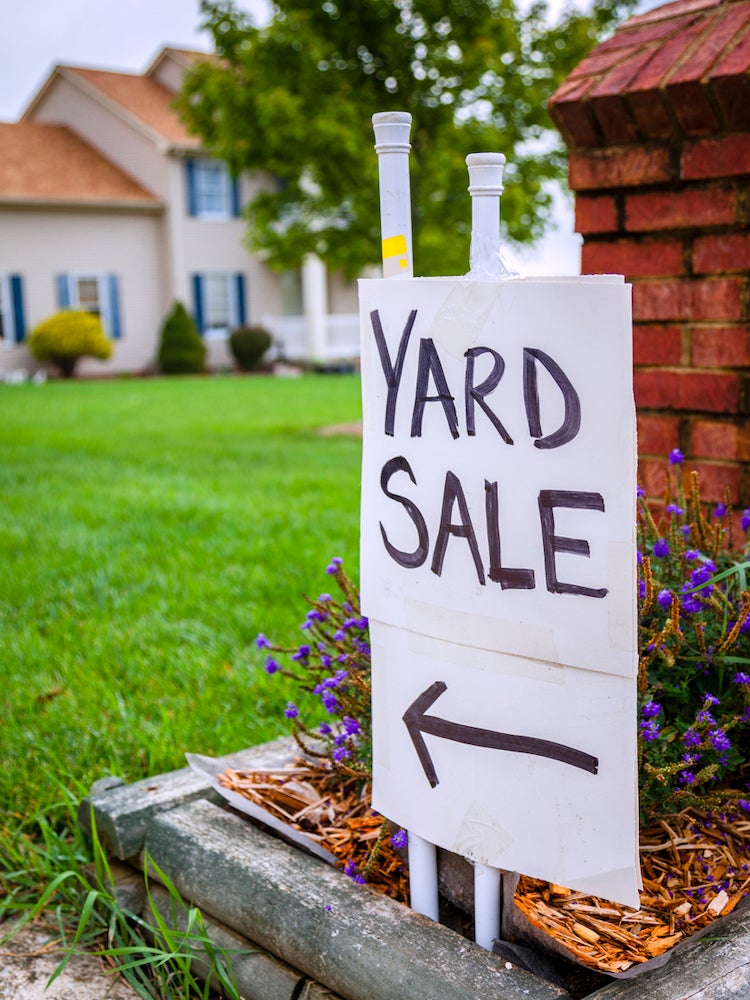
Check local ordinances on sign placement. Make your signs are easy to read from the road and similar in design so people can follow them. Paint or draw the arrows after you plant the signs to make sure they point in the right direction.
Be Sensible About Pricing
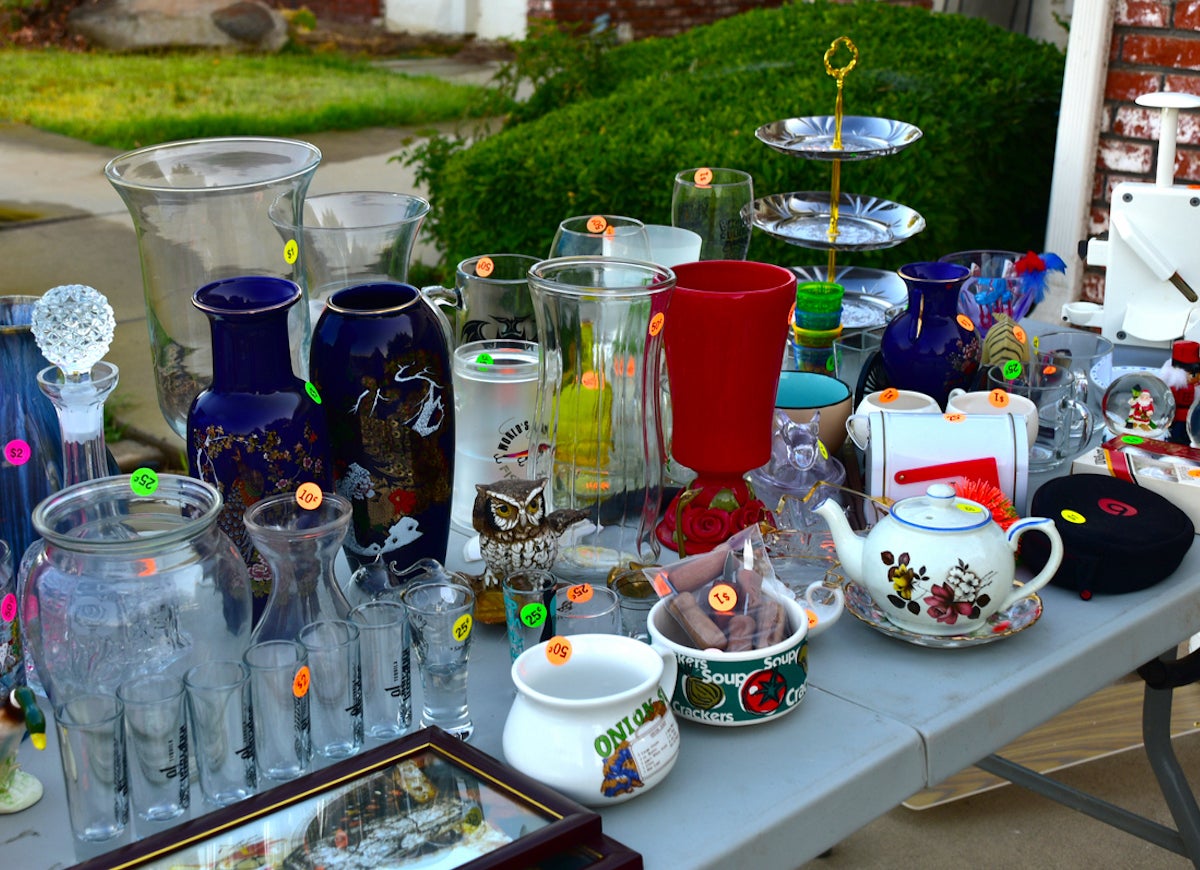
Visit other yard sales and thrift stores to get ideas on pricing. You’re in business for the day to get rid of things you don’t want, so price accordingly. You can mark prices with colored stickers, but make sure you don’t damage the item in the process.
Time It Wisley
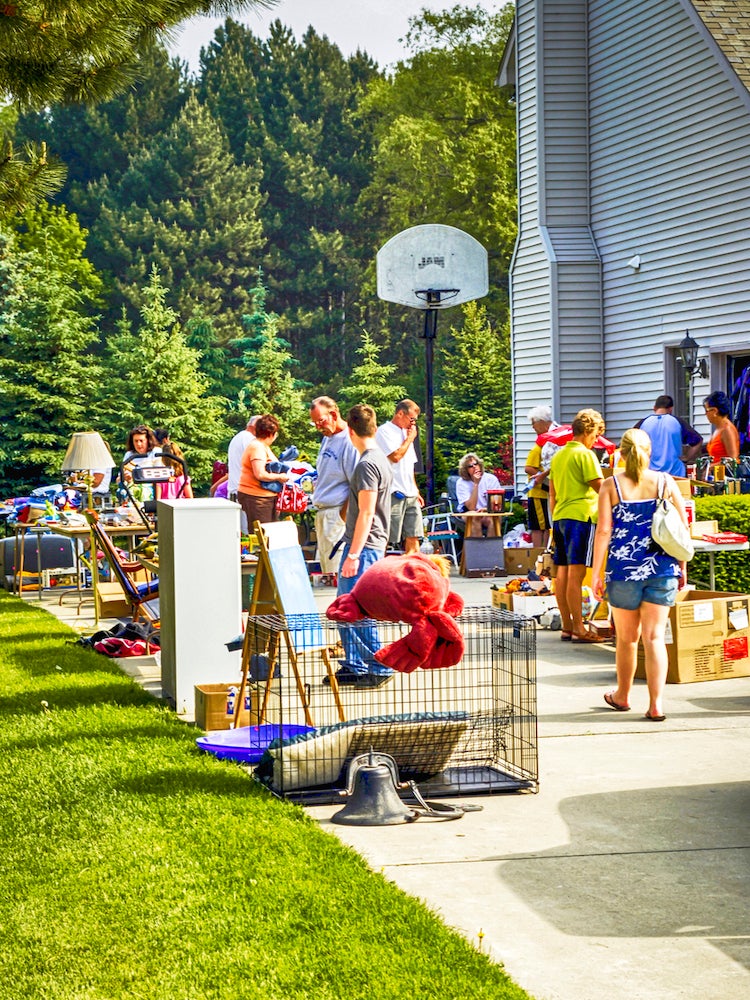
Check ads in your town paper and online to determine local custom. Most yard sales happen on the weekend and start early, think around 7 or 8 a.m. If you have lots of stuff, host a two-day sale for Friday and Saturday, Saturday and Sunday, or two Saturdays in a row. Avoid hosting a sale around a holiday, like Fourth of July or Labor Day, when shoppers most likely have other plans.
Be Ready to Open for Business
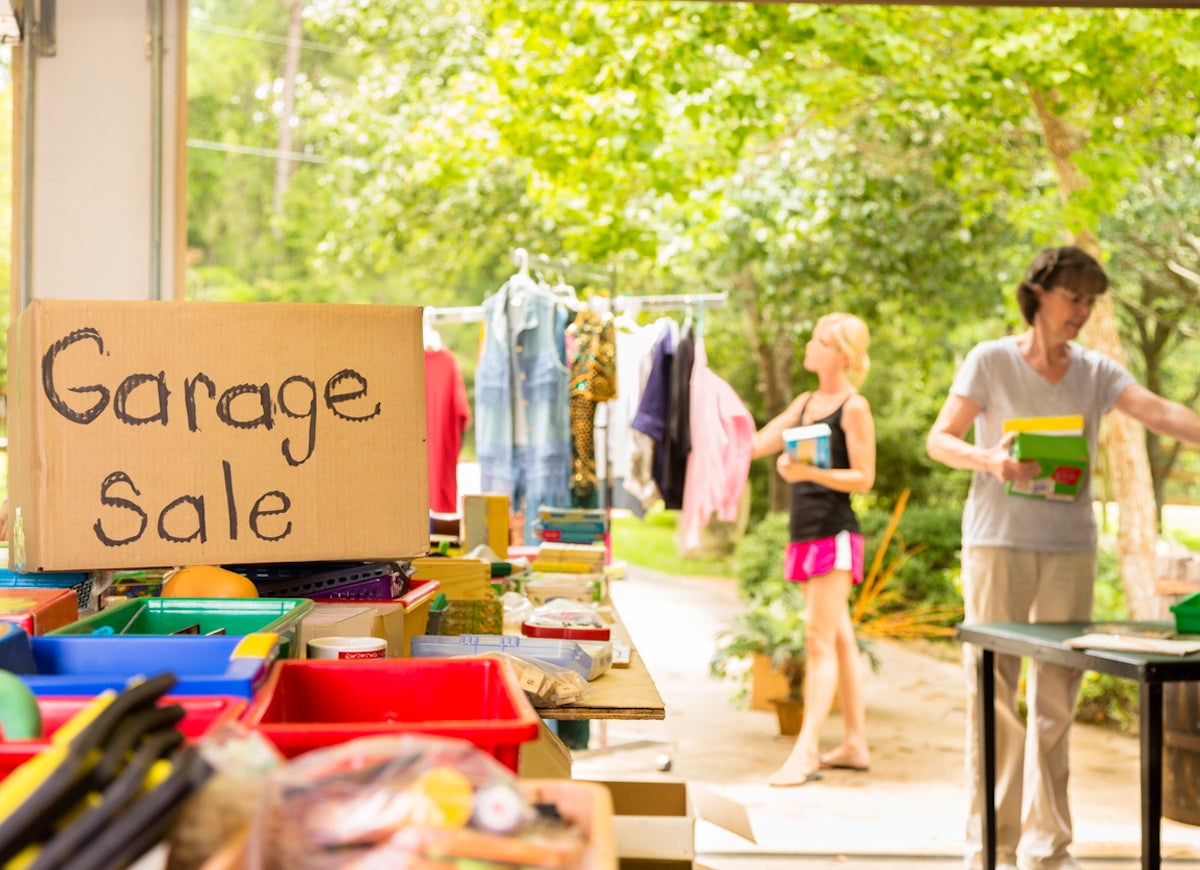
If you don’t want people at your home the day before, don’t advertise in the paper and don’t add arrows to your signs until sale day. “The moment you put your signs out, your yard is fair game,” Littlefield says. But be realistic: For a hassle-free sale, be ready 30 minutes in advance of your advertised start time.
Lure Them In
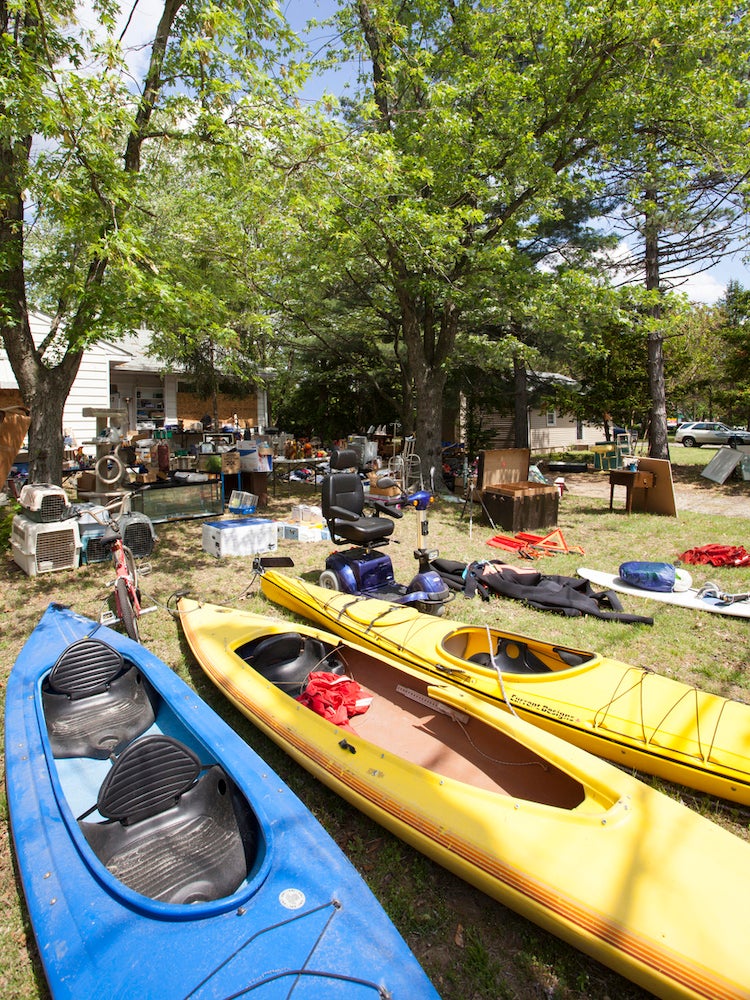
Put the good stuff, the big stuff in easy view. If someone is just driving by, tabletops filled with knickknacks won’t catch the eye but large furniture, lawn mowers, or electronics will.
Don’t Sell It If It Isn’t Yours

Don’t sell your toddler’s toys, your partner’s baseball card collection, or Grandma’s heirloom dishes if the owner isn’t ready to let them go. If an item is not for sale, bring it inside so it won’t get mixed up or add a sign that says “Not for Sale.”
Mind Your Money
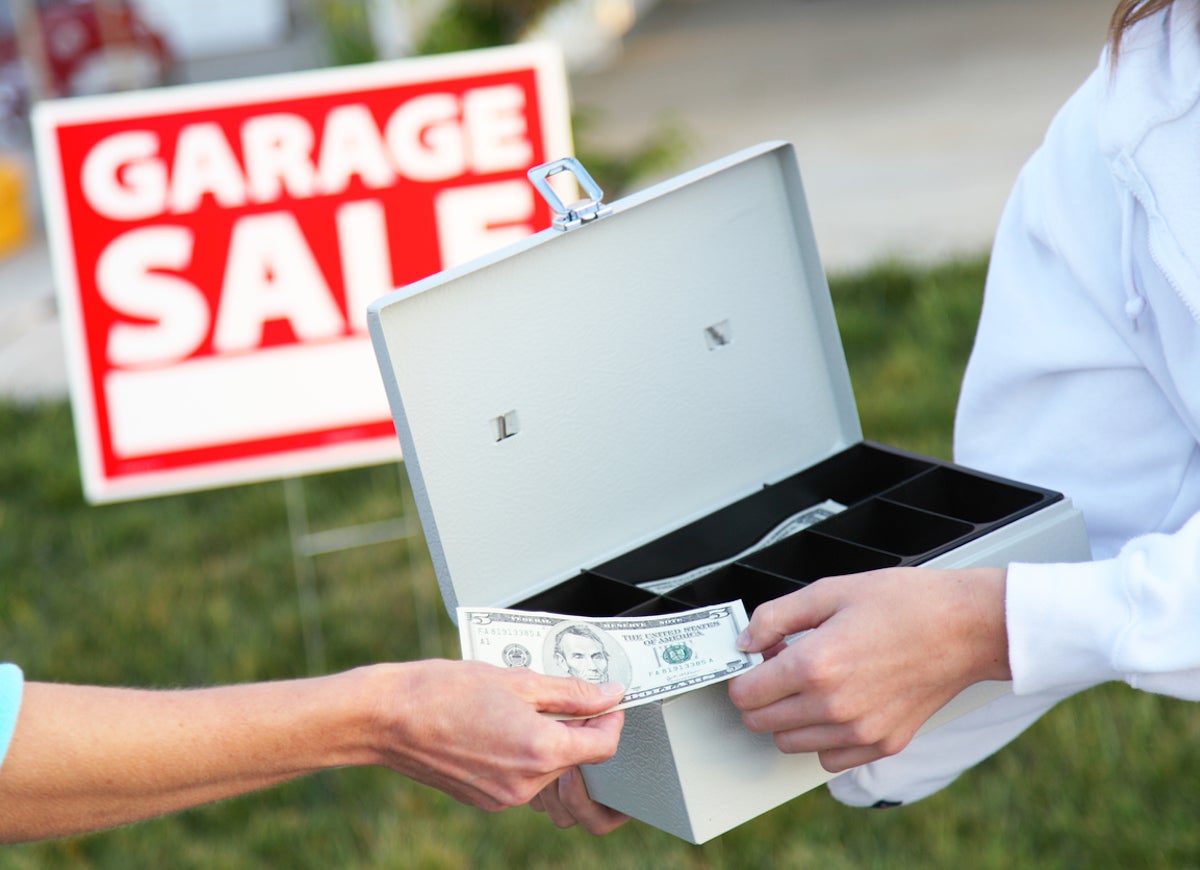
A forgotten cash box is an easy target for thieves. Use a fanny pack, apron, or pocket to keep money with you at all times. You can also buy a special counterfeit detector pen at an office supply store. Make a mark on the bill—if it turns a different color, it’s counterfeit. Don’t take checks or large bills.
Don't Hover

Give people room to browse. If they feel pressured or watched, they’ll leave. Greet them, and then chat with a friend or sip some coffee.

Meet the 2025 Tools of the Year
After months of scouring the market and putting products through their paces, we’ve named the best of the best in new tools. There’s something for everyone, from veteran pros to average Joes.